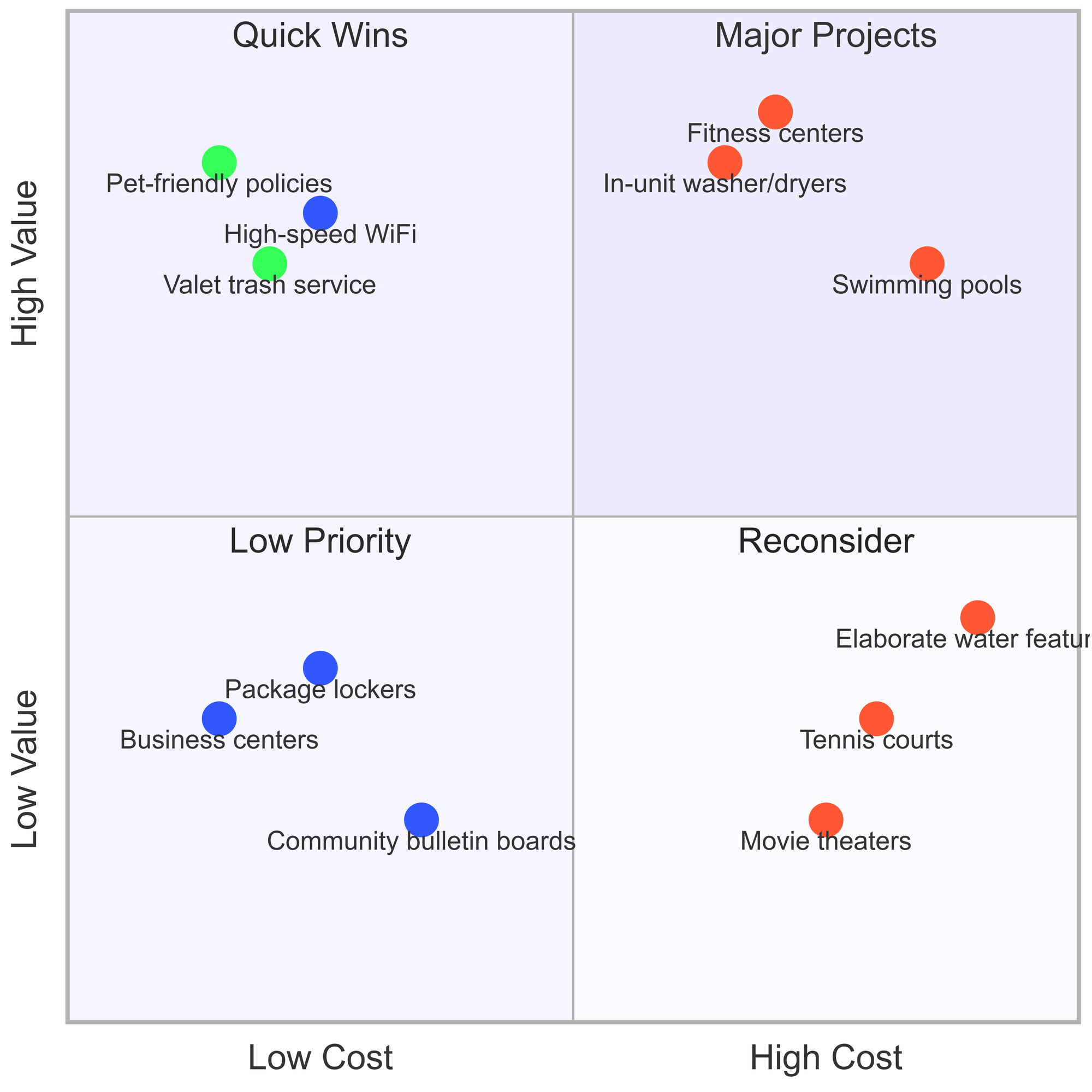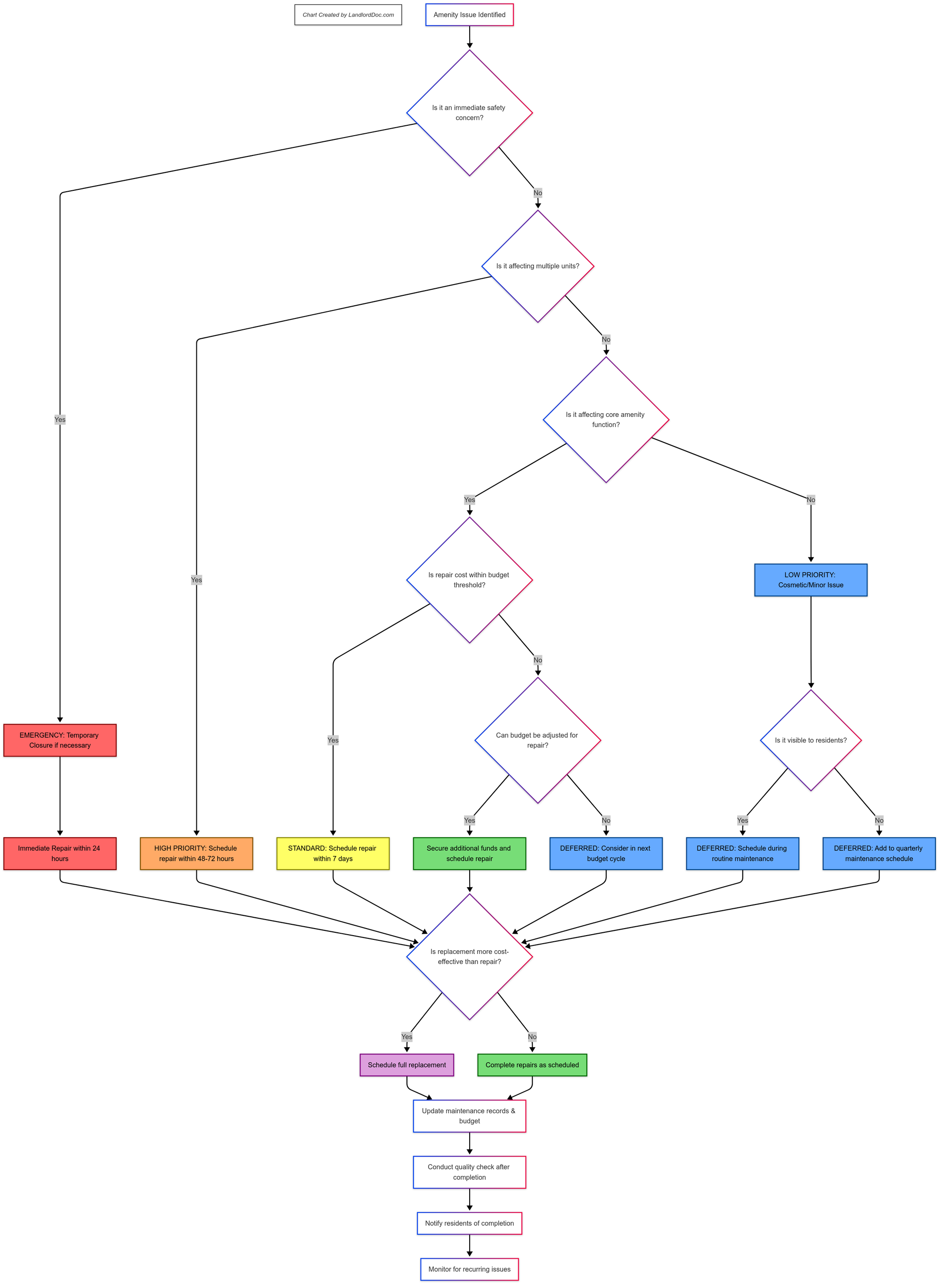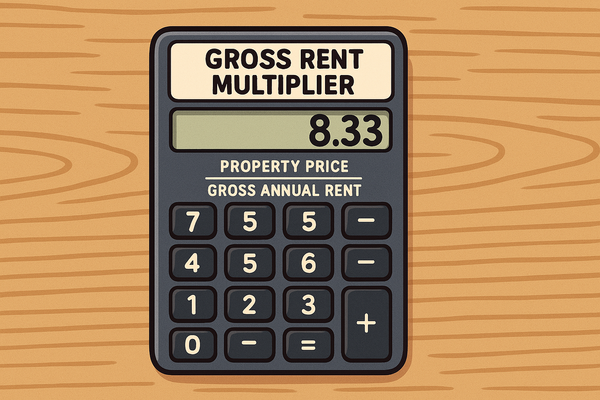Maximizing Property Value Through Strategic Amenity Management
Discover how strategic amenity management can boost property value, increase tenant satisfaction, and provide competitive advantage in today's real estate market. Essential reading for property managers.

In today's competitive real estate market, amenities have become crucial differentiators that significantly impact property value, tenant satisfaction, and overall investment performance. Property amenities are the features, facilities, and services that enhance a property's appeal and functionality beyond its basic structural components. From swimming pools and fitness centers to community gardens and business centers, these value-added elements play a pivotal role in attracting and retaining quality tenants.
Whether you manage residential apartments, vacation rentals, or commercial spaces, understanding how to strategically implement and manage amenities can dramatically increase your property's profitability and market position. This comprehensive guide explores everything property managers need to know about amenity management—from defining what counts as an amenity to implementing best practices that maximize return on investment while enhancing tenant experience.
Definition and Background
What Are Property Amenities?
Property amenities are supplementary features, facilities, or services that enhance the value, appeal, and functionality of a property beyond its basic structural components. These offerings create additional value for occupants by providing comfort, convenience, recreation, or enjoyment that wouldn't otherwise be available.
Amenities generally fall into several categories:
- Physical amenities: Tangible features like swimming pools, fitness centers, rooftop terraces, or in-unit washer/dryers
- Community amenities: Shared spaces such as business centers, lounges, community gardens, or entertainment rooms
- Service amenities: Offerings like concierge service, package acceptance, maintenance services, or community events
- Technological amenities: Smart home features, high-speed internet, keyless entry systems, or online maintenance portals
The definition of amenities varies slightly across property types. In residential settings, amenities typically include features like swimming pools, fitness centers, and laundry facilities that enhance resident lifestyle. For hospitality real estate, amenities are specifically designed to cater to relaxation, pleasure, business meetings, and events. In planned unit developments (PUDs), community amenities are maintained by homeowners associations and available to all residents.
The concept of property amenities has evolved significantly over time. What was once considered a luxury—like air conditioning or in-unit laundry—has in many markets become an expected standard feature. Today's property managers must continuously evaluate and update their amenity offerings to meet changing tenant expectations and maintain competitive advantage in their local markets.
Significance in Property Management
Financial Impact of Amenities
Strategically selected and well-managed amenities deliver significant financial benefits to property owners and managers. Research consistently shows that properties with appealing amenities experience lower vacancy rates and command higher rental prices than comparable properties without such features.
Housing prices increase significantly with the ESG (Environmental, Social, Governance) performance of property management companies, which includes amenity management. Well-managed public spaces and amenities can increase funds from operations and generate revenue directly through user fees or specialized services.
The financial impact of amenities extends beyond just higher rent potential:
- Reduced vacancy rates: Properties with in-demand amenities fill vacant spaces more quickly and experience less turnover
- Premium rental rates: Tenants are willing to pay more for properties that offer desirable amenities
- Enhanced property valuation: Amenities contribute directly to overall property valuation, with certain amenities providing better ROI than others
- Additional revenue streams: Some amenities create opportunities for additional income through usage fees or premium services
For investment properties, the right amenity mix can dramatically impact cap rates and overall investment returns. Even accounting for the additional costs of maintenance and operations, well-chosen amenities typically deliver positive returns on investment.
AMENITY VALUE MATRIX
Rather than making costly upgrades based on intuition or industry trends alone, this matrix helps you visualize exactly where each potential amenity falls on the cost-value spectrum.

The color-coding system instantly identifies which amenity types (service, physical, technology) deliver the most bang for your buck.
For example, you can quickly see that high-speed WiFi and pet-friendly policies fall into the coveted "Quick Wins" quadrant—low-cost improvements that tenants highly value and are willing to pay premium rents to access.
Most importantly, this visualization transforms abstract financial calculations into clear decision pathways. Properties operating with limited improvement budgets should focus first on the "Quick Wins" quadrant before considering "Major Projects" like swimming pools that require substantial capital investment.
Meanwhile, the "Reconsider" quadrant highlights amenities like elaborate water features that consume significant resources without proportional tenant appreciation.
By strategically prioritizing amenities based on this matrix, property managers can develop both short-term improvement plans (focusing on Quick Wins) and long-term capital investment strategies (carefully selected Major Projects) that maximize ROI while enhancing tenant satisfaction and retention.
You can create your own amenity value matrix (similar to the one above) to help determine which amenities make the most sense for your property, and your specific market.
Impact on Tenant Satisfaction and Retention
Beyond financial returns, amenities significantly influence tenant satisfaction, which directly affects retention rates and property reputation. Both employees and visitors appreciate active and beautiful spaces in and around buildings, making amenities a powerful tool for tenant experience management.
Sustainable property management practices, including thoughtful amenity management, add value to residential users by ensuring safety, comfort, and satisfaction. Research findings emphasize significant enhancement in consumer receptivity to property management firms' value-added services, particularly in community healthcare, lifestyle amenities, education, and personalized services.
High tenant satisfaction translates to:
- Extended lease terms: Satisfied tenants are more likely to renew their leases
- Positive reviews and referrals: Happy tenants become ambassadors for your property
- Reduced complaints and maintenance requests: Well-designed amenities that meet tenant needs result in fewer issues
- Stronger community feel: Shared amenities foster connections between residents, creating a more desirable living environment
For vacation rentals specifically, amenities directly impact guest satisfaction scores and the likelihood of repeat bookings or positive reviews—essential factors in platform algorithm rankings and overall property performance.
Tenant Amenity Preferences by Demographic
| Amenity | Millennials/Gen Z | Families | Baby Boomers | Remote Workers |
|---|---|---|---|---|
| High-speed internet | 8.7 | 8.0 | 7.7 | 8.7 |
| Fitness center | 8.0 | 7.6 | 5.4 | 6.0 |
| Package acceptance | 8.5 | 7.0 | 3.3 | 8.0 |
| Outdoor space | 6.3 | 8.5 | 5.9 | 6.0 |
| Parking/garage | 8.5 | 7.8 | 7.0 | 7.0 |
| Smart home features | 8.0 | 6.5 | 6.0 | 7.0 |
| Controlled access | 7.5 | 8.5 | 7.0 | 7.0 |
| Shared workspaces | 5.3 | 4.0 | 3.0 | 8.0 |
Practical Applications
Strategic Amenity Selection for Different Property Types
Different property types require tailored approaches to amenity selection based on target demographics, location, and competitive positioning.
For Residential Apartments:
Community rooms and exterior gathering areas have become standard expectations in many markets. On-site laundry facilities or in-unit washers/dryers remain among the most valued amenities for residential tenants. Additional high-impact amenities include:
- Fitness centers and wellness spaces
- Package acceptance and secure storage
- High-speed internet and technology integration
- Pet-friendly amenities like dog parks or washing stations
- Outdoor spaces including gardens, grilling areas, or walking paths
For Vacation Rentals:
Short-term rental properties must cater to a variety of travelers, from families and couples to business travelers. Essential vacation rental amenities typically include:
- Fast, reliable WiFi with clear access instructions
- Fully equipped kitchens with high-quality appliances
- Dedicated workspace for business travelers
- Outdoor spaces with comfortable seating
- Entertainment options (smart TVs, streaming services)
- Unique features that create memorable experiences (hot tubs, fire pits, etc.)
For Commercial Properties:
Commercial spaces benefit from amenities that enhance productivity and tenant wellbeing:
- Conference and meeting facilities
- Wellness rooms and fitness centers
- Coffee bars and casual meeting spaces
- Green spaces and outdoor work areas
- Transportation amenities (bike storage, EV charging)
Implementation Case Studies
Case Study 1: Mid-Size Apartment Complex Revitalization
Situation: A 120-unit apartment complex built in the 1990s was experiencing declining occupancy (78%) and rental rates below market average.
Amenity Strategy: Management conducted tenant surveys and local market analysis to identify most-desired amenities. They prioritized:
- Converting underused tennis courts to a dog park and outdoor gathering area
- Repurposing a storage area into a package acceptance room with 24/7 access
- Updating the fitness center with modern equipment
- Adding high-speed internet as a building-wide amenity
Outcome: Within 18 months, occupancy increased to 94%, rental rates increased by 12%, and tenant turnover decreased by 22%.
Case Study 2: Vacation Rental Differentiation
Situation: A vacation rental property in a competitive beach market was struggling to maintain bookings during shoulder seasons.
Amenity Strategy:
- Added a hot tub with ocean view
- Created an outdoor cooking area with professional grill
- Installed smart home features throughout the property
- Provided high-end coffee equipment and local coffee subscription
- Partnered with local experiences for guest discounts
Outcome: Bookings increased by 35% during shoulder seasons, average daily rate increased by 28%, and guest satisfaction scores improved from 4.2 to 4.8 (out of 5).
Case Study 3: Repositioning an Older Office Building
Situation: A 1980s office building with rising vacancy rates needed repositioning to compete with newer properties.
Amenity Strategy:
- Converted lobby space to include a coffee bar and flexible working area
- Added a rooftop terrace with WiFi and comfortable seating
- Created a fitness center with showers in previously vacant space
- Implemented a secure package and food delivery system
- Added EV charging stations in the parking area
Outcome: Vacancy rates decreased from 24% to 8% within one year, and the property was able to increase rental rates for new tenants by 15%.
Legal and Compliance Considerations
Regulatory Framework for Amenities
Property managers must navigate various legal and regulatory requirements related to amenity provision and management:
Accessibility Requirements: All amenities must comply with accessibility standards, including the Americans with Disabilities Act (ADA) for commercial properties and the Fair Housing Amendments Act for residential properties. This includes physical access considerations as well as appropriate signage and usage policies.
Safety Regulations: Amenities like pools, fitness centers, and playgrounds must meet specific safety standards. This includes proper fencing, depth markings for pools, regular equipment inspections for fitness centers, and impact-absorbing surfaces for playgrounds.
Fair Usage Policies: Rules posted at amenities must comply with fair housing laws and cannot discriminate against protected classes. For example, "adult swim" times at pools may be considered discriminatory against families with children.
Health Department Regulations: Amenities like pools, spas, and in some cases fitness centers may be subject to local health department regulations, including water quality testing and reporting requirements.
HOA and Community Rules: In planned communities, amenities are typically governed by HOA rules that specify usage hours, guest policies, and maintenance responsibilities. Property managers must ensure compliance with these governing documents.
Liability Considerations: Property managers must maintain appropriate insurance coverage for amenities, particularly those with increased liability risk like pools, playgrounds, and fitness centers. Proper signage, waivers, and usage rules can help mitigate liability.
Consequences of Non-Compliance
Failure to comply with regulations related to amenities can result in:
- Civil penalties and fines
- Litigation from tenants or visitors injured while using amenities
- Fair housing complaints and potential discrimination lawsuits
- Increased insurance premiums or coverage denial
- Negative publicity and reputational damage
Property managers should implement regular compliance audits for all amenities and maintain thorough documentation of inspections, maintenance, and any incidents that occur.
Best Practices for Amenity Management
1. Conduct Regular Market and Tenant Research
Successful amenity management begins with understanding what your target tenants actually value—not just what seems trendy.
Implementation Steps:
- Survey current tenants about amenity preferences and satisfaction
- Research competing properties in your market to identify amenity gaps
- Analyze demographic trends in your target market
- Review amenity usage data to identify underutilized features
- Calculate ROI for potential new amenities before implementation
Tools and Resources:
- Digital survey platforms (SurveyMonkey, Google Forms)
- Competitive market analysis software
- Property management platforms with amenity usage tracking
2. Prioritize Maintenance and Upkeep
Even the most attractive amenities quickly become liabilities if poorly maintained. Establish rigorous maintenance protocols to ensure amenities remain functional and appealing.
Implementation Steps:
- Create detailed maintenance schedules for each amenity
- Implement regular inspections with standardized checklists
- Train staff on proper maintenance procedures
- Establish a quick-response system for amenity-related issues
- Budget appropriately for ongoing maintenance and periodic upgrades
Inadequate maintenance can result in "poor curb appeal or poor visibility of the property" and lead to decreased occupancy. Remember that even with good design, public spaces "will languish if no one supervises or cares for it".
Tools and Resources:
- Maintenance management software
- Digital inspection checklists
- Vendor management systems for specialized maintenance

3. Optimize Amenity Accessibility and Hours
Amenities deliver maximum value when they're easily accessible to the tenants who want to use them.
Implementation Steps:
- Ensure amenities are usable beyond traditional business hours and on weekends
- Implement secure access control systems where appropriate
- Position amenities in visible, convenient locations
- Create clear, permanently affixed signage with hours and guidelines
- Consider seasonal adjustments to hours for outdoor amenities
For tenant safety and security, exterior amenities should be within view of at least one apartment building. Additionally, amenity lighting should be sufficient for its purpose while being directed downward to reduce nuisance light.
Tools and Resources:
- Digital access control systems
- Scheduling software for reservable amenities
- Clear, professional signage with branding elements
4. Leverage Technology for Enhanced Amenity Experience
Today's tenants expect technology integration throughout their rental experience, including amenities.
Implementation Steps:
- Implement online reservation systems for bookable amenities
- Install usage monitoring for fitness equipment and other facilities
- Create digital guides for amenity usage
- Consider app-based access for conveniences like package rooms
- Use smart building technology to optimize energy usage in amenity spaces
Tools and Resources:
- Amenity booking software
- Smart building management systems
- Digital communication platforms for usage updates
5. Create Community Through Amenity Programming
Transform passive amenities into community-building tools through thoughtful programming and events.
Implementation Steps:
- Develop a calendar of community events utilizing amenity spaces
- Partner with local businesses for special tenant experiences
- Create clubs or groups centered around amenities (running clubs, gardening groups)
- Gather feedback after events to continuously improve programming
- Use amenity spaces to showcase local artists or entrepreneurs
Tools and Resources:
- Event management software
- Community engagement platforms
- Local partnership directories
Related Concepts
ESG (Environmental, Social, Governance) in Property Management
ESG principles increasingly influence amenity decisions as property managers recognize the importance of sustainability and social responsibility. ESG-focused amenity management includes:
- Environmental features: Green spaces, energy-efficient systems, recycling programs, and sustainable materials
- Social elements: Community-building spaces, inclusive design, and amenities that promote wellness and connection
- Governance aspects: Transparent policies, fair usage rules, and ethical management practices
Large property management firms often incorporate ESG factors into amenity management, focusing on environmental targets like "carbon neutrality, energy saving, waste reduction" and social elements like "community contribution".
Understanding ESG principles helps property managers develop amenity strategies that appeal to environmentally and socially conscious tenants while potentially qualifying for certifications that enhance property value.
Proptech and Amenity Management
Property technology (proptech) continues to transform amenity management through:
- Access control systems: Keyless entry, reservation systems, and usage monitoring
- Amenity booking platforms: Software that allows tenants to reserve spaces and facilities
- Usage analytics: Data collection on amenity utilization to inform future decisions
- Maintenance management: Systems that track maintenance needs and schedules
- Tenant experience apps: Integrated platforms that connect tenants with amenities and services
Proptech solutions help property managers optimize amenity operations while enhancing the tenant experience through convenience and customization.
Total Cost of Ownership for Amenities
Beyond initial implementation costs, property managers must consider the total cost of ownership (TCO) for amenities, including:
- Ongoing maintenance expenses: Regular upkeep, supplies, and repairs
- Staffing requirements: Personnel needed to manage or monitor amenities
- Insurance implications: Premium increases related to certain amenities
- Utility costs: Water, electricity, and other resources consumed
- Replacement cycles: Expected lifespan and replacement schedules for equipment
Understanding TCO helps property managers make more informed decisions about which amenities deliver the best long-term value and how to properly budget for amenity-related expenses.
Amenity Monetization Strategies
Some amenities present opportunities for additional revenue generation:
- Premium service tiers: Basic access included with rent, enhanced services at additional cost
- Usage fees: Charges for certain high-cost amenities or extended usage
- Partnership revenue: Income from service providers who utilize amenity spaces
- Short-term rentals: Allowing non-residents to rent amenity spaces for events
When implemented thoughtfully, monetization strategies can help offset amenity costs while still delivering value to tenants.
Common Questions
Q: Which amenities provide the best return on investment?
A: The amenities with the highest ROI vary by property type and location, but consistently strong performers include:
For residential properties:
- In-unit washers and dryers or convenient laundry facilities
- Updated kitchens and bathrooms
- Secure package acceptance
- High-speed internet access
- Outdoor social spaces
For vacation rentals:
- High-quality WiFi
- Private outdoor spaces
- Kitchen upgrades
- Smart home features
- Unique experience-creating amenities like hot tubs or fire pits
Research indicates that properties with well-designed, properly maintained public spaces experience lower vacancy rates and higher operational revenue. The best approach is to research your specific market and target demographic, as preferences vary significantly by location and tenant profile.
Q: How should property managers budget for amenity maintenance?
A: Best practices for amenity maintenance budgeting include:
- Allocate 1-3% of the property's value annually for overall maintenance, with specific amenities requiring dedicated portions of this budget
- Create separate line items for routine maintenance versus capital improvements
- Establish reserve funds for major repairs and replacements
- Track actual maintenance costs over time to refine future budgets
- Consider the life cycle of each amenity and plan for eventual replacement
In HOA communities, "monthly or yearly HOA fees often cover the cost of landscaping and routine maintenance" of shared amenities. In some markets, the "monthly property management fee paid by property owners could be equivalent to around 5% of monthly rent" to cover amenity management.
Regular preventative maintenance typically costs less in the long run than reactive repairs, so prioritize ongoing upkeep in your budget planning.
Q: How do amenity preferences vary across different tenant demographics?
A: Amenity preferences show significant variation across demographic groups:
- Millennials and Gen Z: Prioritize technology integration, social spaces, and wellness amenities
- Families: Value safety features, children's play areas, and storage space
- Baby Boomers and retirees: Appreciate accessibility features, security, and low-maintenance living
- Remote workers: Seek reliable internet, workspace options, and package acceptance
- Urban vs. suburban tenants: Urban dwellers often prioritize space-maximizing amenities, while suburban tenants may place higher value on outdoor features
For short-term rentals, amenities must "cater to a variety of travelers" to maximize profitability. In resort settings, amenities are a core part of the experience, including "food, lodging, swimming" facilities.
Understanding your target demographic is essential for making informed amenity decisions. Conduct regular surveys and stay informed about changing preferences within your tenant population. across different tenant demographics?
A: Amenity preferences show significant variation across demographic groups:
- Millennials and Gen Z: Prioritize technology integration, social spaces, and wellness amenities
- Families: Value safety features, children's play areas, and storage space
- Baby Boomers and retirees: Appreciate accessibility features, security, and low-maintenance living
- Remote workers: Seek reliable internet, workspace options, and package acceptance
- Urban vs. suburban tenants: Urban dwellers often prioritize space-maximizing amenities, while suburban tenants may place higher value on outdoor features
Understanding your target demographic is essential for making informed amenity decisions. Conduct regular surveys and stay informed about changing preferences within your tenant population.
Q: How can property managers measure the impact of amenities on property performance?
A: Key metrics for evaluating amenity performance include:
- Occupancy rate changes: Track whether new or improved amenities correlate with higher occupancy
- Rental rate premiums: Measure the rental premium you can charge compared to similar properties without specific amenities
- Lease renewal rates: Monitor whether tenants in units with access to certain amenities renew at higher rates
- Amenity usage statistics: Track how frequently different amenities are used
- Tenant satisfaction scores: Survey tenants about specific amenities and overall satisfaction
- Marketing effectiveness: Analyze which amenities generate the most interest from prospective tenants
Property managers should continually evaluate "how well a building plaza or lobby is serving these users... enabling staff to successfully tailor amenities to meet users' needs". Use an "innovative evaluation tool, based on the notion that even the best spaces can be improved, while those spaces that are underperforming deserve renewed attention".
Implement systems to consistently gather this data and review it quarterly to inform future amenity investments.
Conclusion
Strategic amenity management represents one of the most powerful tools available to property managers seeking to maximize property value and tenant satisfaction. By thoughtfully selecting, implementing, and maintaining amenities that align with target tenant preferences and market demands, property managers can significantly enhance both the financial performance and competitive positioning of their properties.
The most successful property managers approach amenities as an ongoing strategic priority rather than a one-time implementation. This means continuously evaluating amenity performance, staying attuned to evolving tenant preferences, and being willing to adapt offerings to meet changing market conditions.
As tenant expectations continue to evolve, particularly around technology integration and sustainability, property managers who take a proactive, data-driven approach to amenity management will be best positioned to create properties that not only attract and retain tenants but also deliver superior returns on investment.
Recommended Resources for Further Learning:
- Institute of Real Estate Management (IREM) - Offers courses and resources on property management best practices, including amenity management
- National Apartment Association - Provides research reports on tenant preferences and amenity trends
- Urban Land Institute - Publishes case studies and reports on successful property developments and amenity strategies
- "Property Management" by Robert C. Kyle - Comprehensive guide to property management principles
- PropTech Breakthrough - Showcases innovative technology solutions for property management
By mastering the principles and practices of strategic amenity management, property managers can create exceptional tenant experiences while maximizing returns for property owners—a truly win-win approach to property management.





